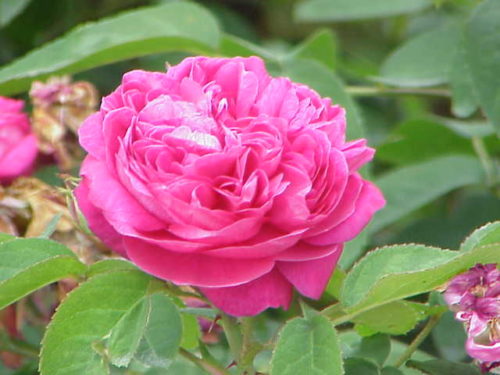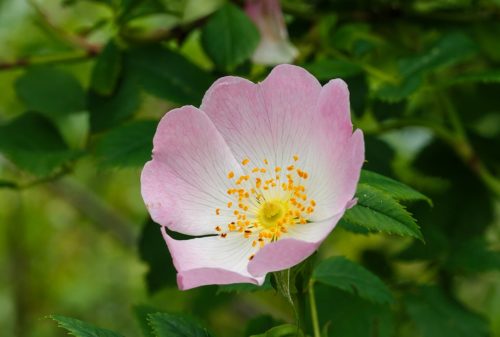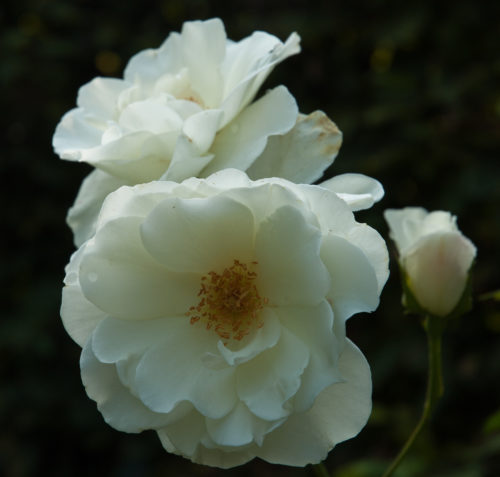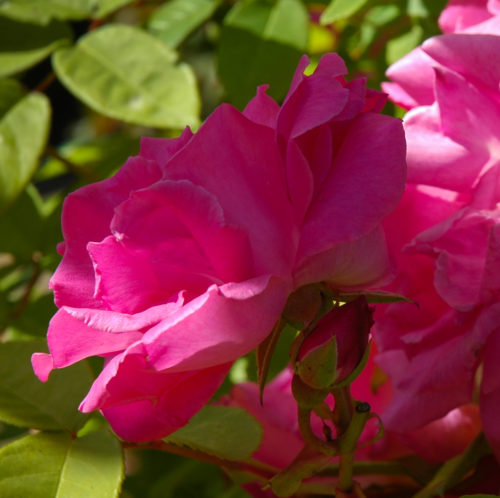Ground covering roses
Rose runners creep along the ground and compact into a rose carpet. Bloom profusely until late autumn. Height + 60 cm; Prune back to + 20 cm height in early spring (early March).
Damask roses
Group of roses whose origin is probably the Middle East . The flowers are usually light pastel and the leaves are mostly grey-green. Light pruning after flowering. Nutritious soil, fertilize in spring.
English roses
English roses originated from crossing Bourbon roses with modern roses. Grow into large rose bushes over a meter in size. The roses bloom a few times per season and the flowers are mostly pastel shades and have a pleasant, sometimes heavy scent. Nutritious soil, fertilize regularly.
Shrub roses
Natural shaped rose bushes. There are low types of about half a meter high and high, upright types up to more than a meter. There are both perennial varieties and shrub roses that only flower for a short period. Prune after flowering, cutting off dead branches.
Climbing roses
To be distinguished according to climbing roses with a short flowering period (June and/or July) and climbing roses that continue to bloom. Prune at the end of winter.
Roses under license
These roses are under copyright and may therefore not be grown just like that. This requires a license that is issued by the original breeder – often a well-known ‘rose house’. Licensed roses can be recognized by the ©-sign on the plant label.
Musk roses
The roses that bloom several times per season are the result of various crossings of the wild rose Rosa moschata at the beginning of the last century. Musk or mochata roses have a specific musk scent. The roses bloom in umbels.
Standard tree roses
Roses grafted on a trunk of about one meter. Prune in early spring: remove diseased and dead branches.
Shrub roses
Shrub roses grow both in width and height with often fragrant roses.
Hybrid tea roses
Large roses on single stems are hybrid tea roses. They bloom from mid-summer to fall.
Hybrid tea roses grow – depending on the variety – between 50 cm and one and a half meters. Prune in early March, removing old and dead wood. Prune branches to a length of + 15 cm so that between four and six outward-facing buds remain on the branch.
Weeping roses
Climbing rose or bed rose grafted onto a trunk. Prune after flowering: remove old and (too) long branches.
Spray roses and floribunda roses
The roses bloom in clusters in contrast to hybrid tea, which has only one rose per stem. Spray roses bloom profusely and for a long time until the first frost. Some varieties have a nice scent. They grow to between 50 cm and one meter. Prune back to a height of about 20 cm at the beginning of March – you can do that with the hedge trimmer.
(Botanical) wild rose
The wild roses form the basis of the more than thirteen thousand improved rose varieties. Botanical roses such as dog rose and burnet rose still populate dunes, brushwood, botanical gardens and wasteland.
There are also thornless roses.




